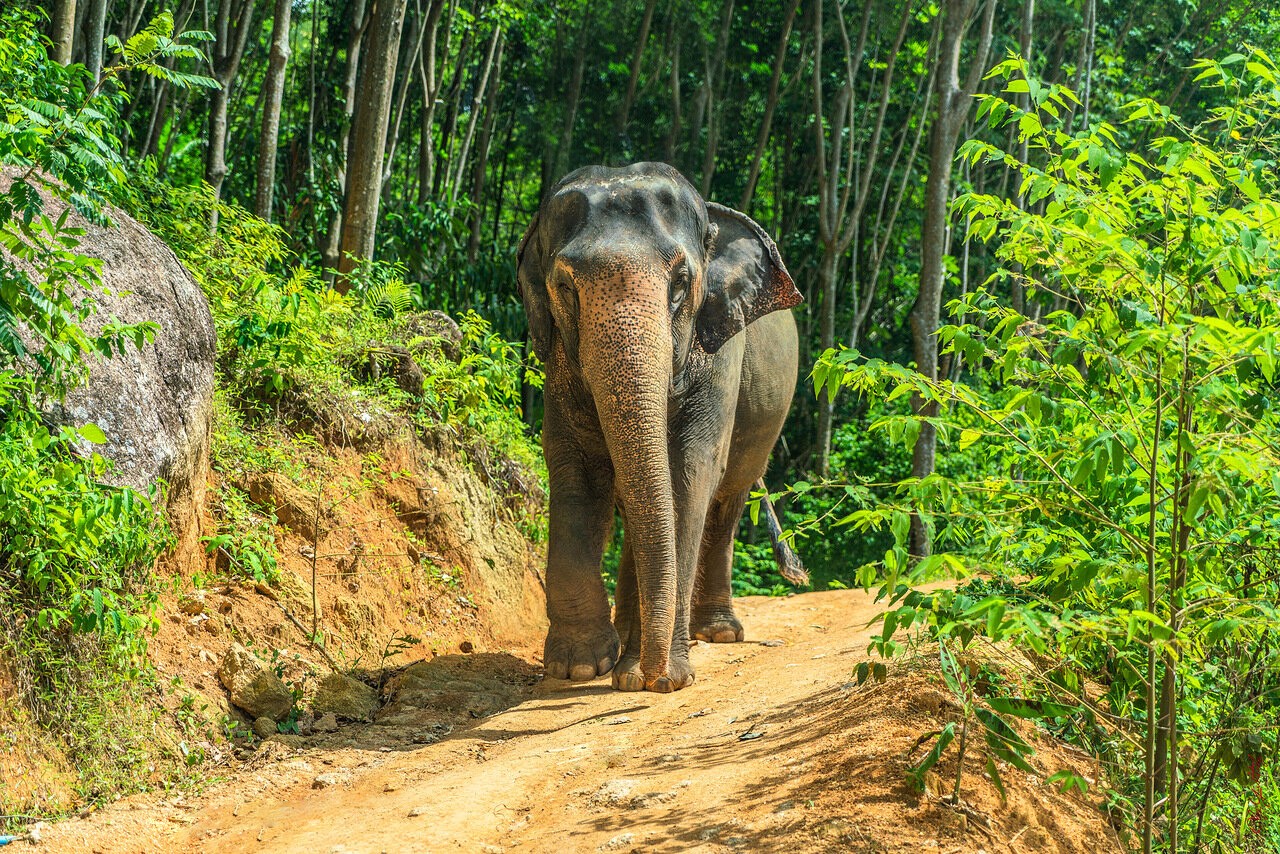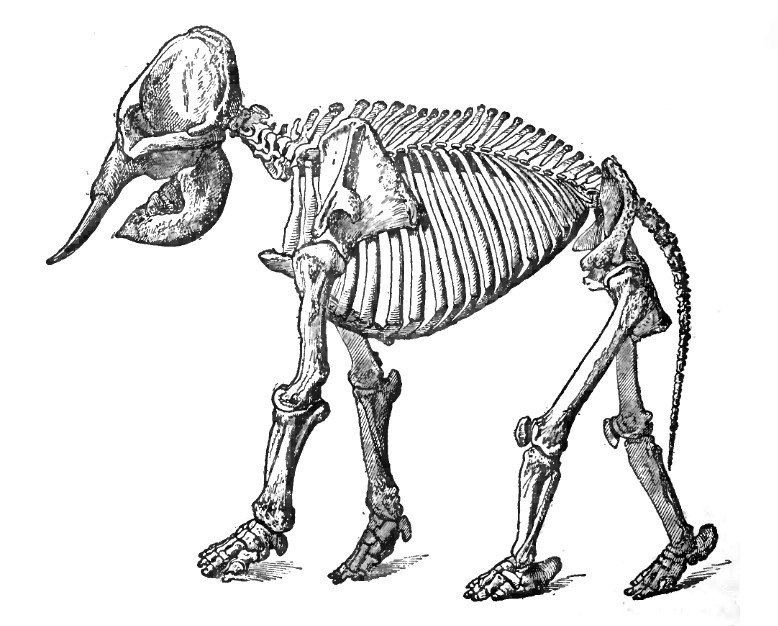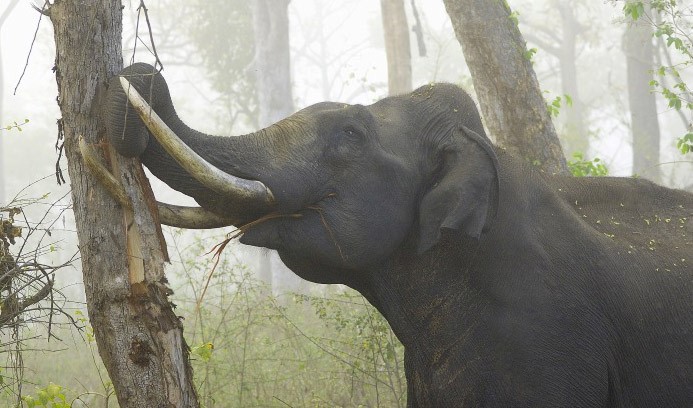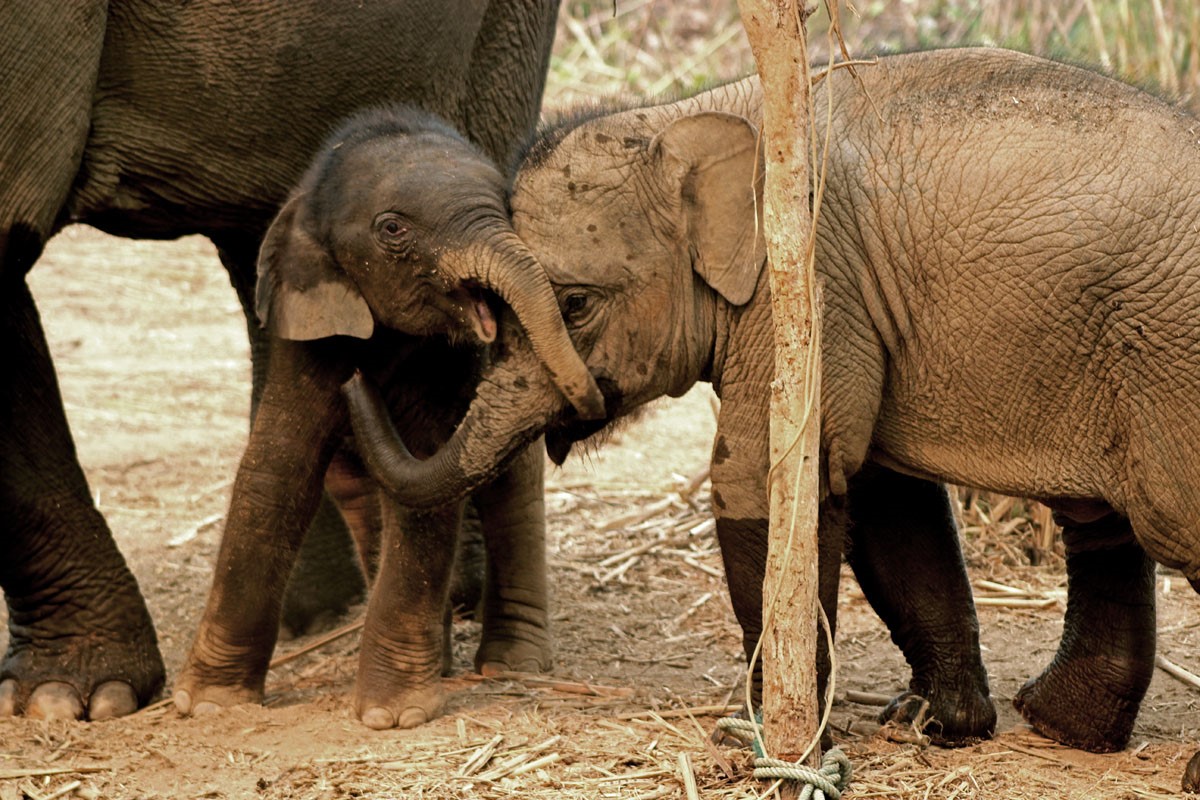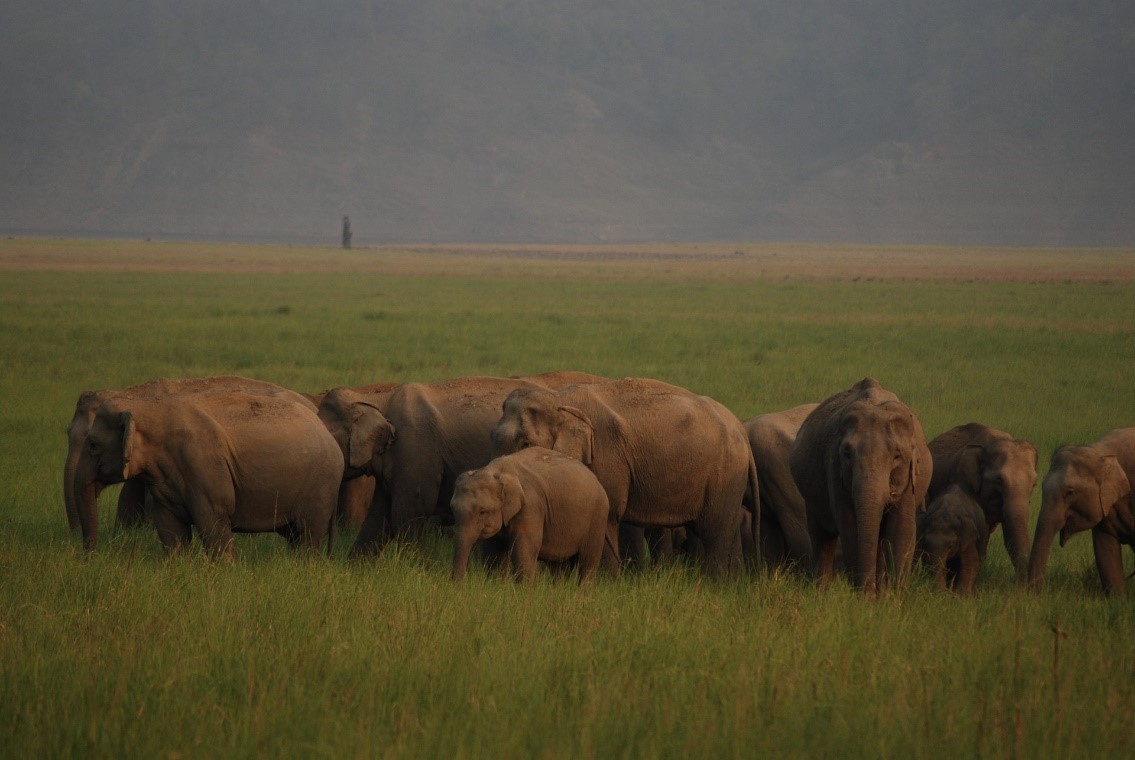On average, when fully-grown, males are about 2.75 m (9.0 ft) tall at the shoulder and 4 t (4.4 short tons) in weight, while females are smaller at about 2.40 m (7.9 ft) at the shoulder and 2.7 t (3.0 short tons) in weight. Sexual dimorphism in body size is relatively less pronounced in Asian elephants than in African bush elephants; with males averaging 15% and 23% taller in the former and latter respectively. Length of body and head including trunk is 5.5–6.5 m (18–21 ft) with the tail being 1.2–1.5 m (3.9–4.9 ft) long.
The distinctive trunk is an elongation of the nose and upper lip combined; the nostrils are at its tip, which has one finger-like process. The trunk contains as many as 60,000 muscles, which consist of longitudinal and radiating sets. The longitudinals are mostly superficial and subdivided into anterior, lateral, and posterior. The deeper muscles are best seen as numerous distinct fasciculi in a cross-section of the trunk. The trunk is a multipurpose prehensile organ and highly sensitive, innervated by the maxillary division of the trigeminal nerve and by the facial nerve. The acute sense of smell uses both the trunk and Jacobson's organ. Elephants use their trunks for breathing, watering, feeding, touching, dusting, sound production and communication, washing, pinching, grasping, defense and offence.
The "proboscis" or trunk consists wholly of muscular and membranous tissue, and is a tapering muscular structure of nearly circular cross-section extending proximally from the attachment at the anterior nasal orifice, and ending distally in a tip or finger. The length may vary from 1.5 to 2 m (59 to 79 in) or longer depending on the species and age. Four basic muscle masses—the radial, the longitudinal and two oblique layers—and the size and attachments points of the tendon masses allow the shortening, extension, bending, and twisting movements accounting for the ability to hold, and manipulate loads of up to 300 kg (660 lb). Muscular and tendinous ability combined with nervous control allows extraordinary strength and agility movements of the trunk, such as sucking and spraying of water or dust and directed airflow blowing.

The trunk can hold about four litres of water. Elephants will playfully wrestle with each other using their trunks, but generally use their trunks only for gesturing when fighting.
Tusks serve to dig for water, salt, and rocks, to debark and uproot trees, as levers for maneuvering fallen trees and branches, for work, for display, for marking trees, as a weapon for offence and defense, as trunk-rests, and as protection for the trunk. Elephants are known to be right or left tusked.
Female Asian elephants usually lack tusks; if tusks—in that case, called "tushes"—are present, they are barely visible and only seen when the mouth is open. The enamel plates of the molars are greater in number and closer together in Asian elephants. Some males may also lack tusks; these individuals are called "filsy makhnas", and are especially common among the Sri Lankan elephant population.
Skin color is usually grey, and may be masked by soil because of dusting and wallowing. Their wrinkled skin is movable and contains many nerve centers. It is smoother than that of African elephants and may be depigmented on the trunk, ears, or neck. The epidermis and dermis of the body average 18 mm (0.71 in) thick; skin on the dorsum is 30 mm (1.2 in) thick providing protection against bites, bumps, and adverse weather. Its folds increase surface area for heat dissipation. They can tolerate cold better than excessive heat. Skin temperature varies from 24 to 32.9 °C (75.2 to 91.2 °F). Body temperature averages 35.9 °C (96.6 °F).

Asian elephants have a very large and highly developed neocortex, a trait also shared by humans, apes and certain dolphin species. They have a greater volume of cerebral cortex available for cognitive processing than all other existing land animals. Results of studies indicate that Asian elephants have cognitive abilities for tool use and tool-making similar to great apes. They exhibit a wide variety of behaviors, including those associated with grief, learning, allomothering, mimicry, play, altruism, use of tools, compassion, cooperation, self-awareness, memory, and language. Elephants reportedly head to safer ground during natural disasters like tsunamis and earthquakes, but data from two satellite-collared Sri Lankan elephants indicate this may be untrue.

